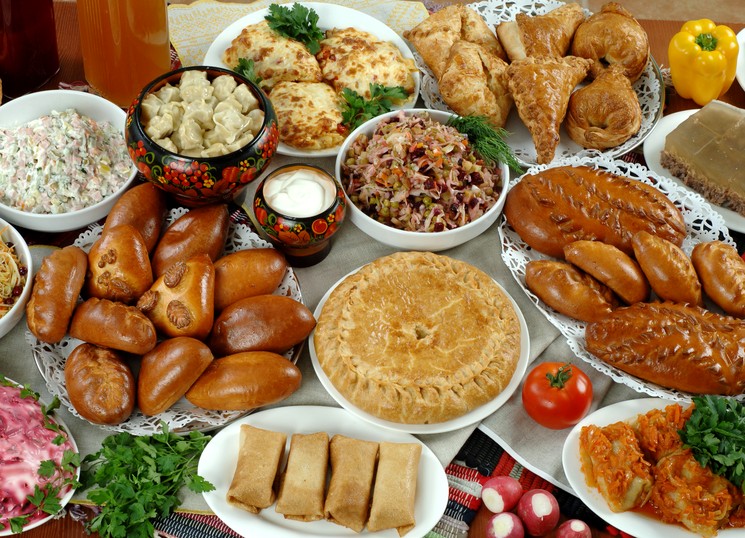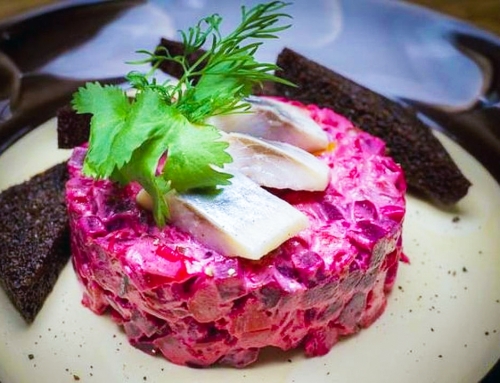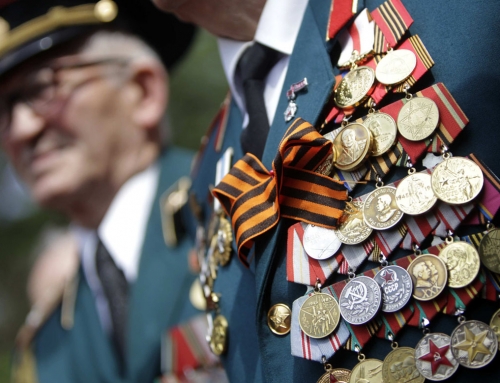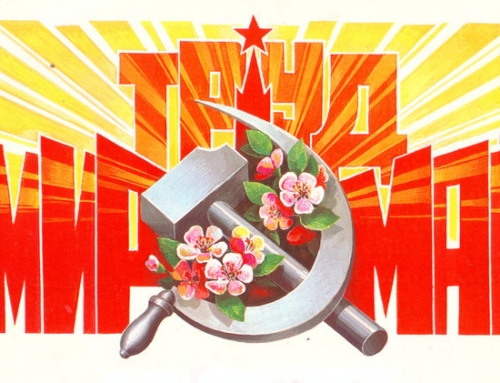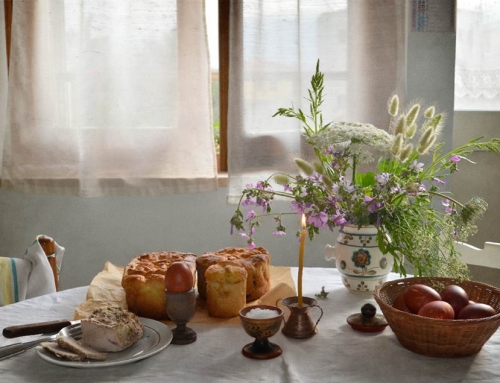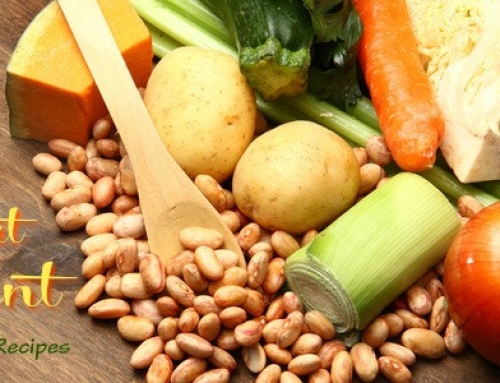Sochelnik: Russian Orthodox Christmas. On January 6th, many Orthodox countries including Russia will celebrate Christmas Eve — also known as “Sochelnik”. While the date of Russian Christmas has always been on January 7 many traditions have changed over the past 200 years. In this post, we explore a number of folkloric rituals, and illuminate the differences between Russian Orthodox and Western Christmas customs.
What is “Sochelnik”?
Sochelnik comes from the Russian word “sochivo” – literally a liquid made from soaking wheat grains, and used instead of butter since no animal products are allowed to be consumed during the holiday. A simple porridge dish made with sochivo is known as “kutya.” The porridge is prepared with honey, poppy seeds, nuts and dried fruits – symbolizing immortality, success and happiness. Eating the grain porridge on Christmas Eve is also an homage to Daniel’s Fast on his journey to discovering God. (See a simple recipe for authentic sochivo at the end of this post). According to Orthodox tradition, on the eve before Christmas it is customary to fast until the first start is visible in the night sky.
Other rituals included door-to-door singing of Russian carols known as “kolyadi.” The ceremonial singing took place on the eve before Christmas when the carolers trekked their way through neighborhood reciting songs and in return receiving cookies and other sweets as a form of gratitude for their entertainment. Carolers often dressed in colorful costumes as a way to bring good spirits for their audience.
Another fascinating tradition is fortune-telling during Sochelnik. To this day, many women believe that Christmas Eve is the best time to find out their fortune for the coming year and often rely on old rituals to cast away evil spirits and spells, and help attract great fortune and love.
Sochelnik fortune-telling customs of years past ranged from the silly to the absurd. A common practice for women included throwing a favorite boot or shoe onto the street on Christmas eve; the first man to find the shoe was said to be their future husband. Another custom suggested that unmarried women light a candle and say a prayer in front of a mirror at midnight on Christmas Eve. This was supposed to help illuminate their future husband’s face as a reflection in the mirror.
Most folkloric rituals were stamped out or banished altogether with the coming of Communism in the early 20th century. Christmas celebrations were run underground and churches were closed during Communism’s 70 year reign. As such, some of the traditions died out with the changing generations. New holidays (New Year) and characters (Ded Moroz) were introduced to help transition the public from pagan and folk traditions to more secular celebrations.
Christmas Folklore and Fortune-telling
In the old days, Russian folklore traditions surrounding Christmas included elements of mysticism and magic. Many believed that Christmas weather could predict the coming year’s agricultural prospects, an important factor for the mostly agrarian society of the time. Clear and starry skies, for example were considered a good omen for a plentiful pea and grain harvest. Similarly, folk charms and trinkets were thought to carry especially potent energies during Christmas, helping to protect homes, farms and families from evil spirits and misfortunes.
Orthodox Christians attend a midnight Christmas service which usually starts at midnight and lasts until dawn. Churches are bustling with worshipers reciting prayers, lighting and placing candles in various locations within the church. Lighting candles for the living, the dead, Jesus and Mother Mary is customary throughout the services.
Most churches have a few seats lined up against the four walls which are generally reserved for the sick and elderly; everyone else is either standing or moving about the premises. Thousands of flickering candles illuminate exquisite religious paintings and icons, and play off the multi-color lights of traditional mosaics. The scent of burning incense, singing of the choir and intense chanting of priests and larger congregation create an atmosphere of religious mystery and magic. Sometime past midnight the priests lead the congregation on a three hour walk around the church, praising the Lord and chanting prayers.
Modern Orthodox Christmas Service
With the departure of Communism in the early 1990’s, Christmas once again gained popularity and many believers returned to newly re-opened churches. Ancestral traditions were revived once again and the holiday gained new credence. Nonetheless, Russian celebrations of Christmas are vastly different from the Western traditions, and can seem rather chaotic for most Western observers.
Traditional Russian Christmas Food
Traditional observance of Sochelnik goes far beyond church services. At home, in the old days and in ultra conservative families now, hay is spread on the floors and tables to represent baby Jesus’ manger, and as a way to ensure good crops for the coming year. White tablecloth, symbolic of Jesus’ swaddling clothes covers the table and a tall white candle is lit and placed at the center to represent Christ as the light of the world. A large loaf of lenten bread (stuffed with potatoes or cabbage) known as pagach is placed next to the candle.
Christmas Eve supper usually follows a period of fasting and usually consists of 12 meatless courses honoring Christ’s apostles. In ultra strict Orthodox families, fish, vegetable oil and even alcohol are not permitted.
The meal begins with a prayer and blessing of the food, usually led by the father or other elder of the family. The mother in turn blesses each person at the table with a prayer and spreading honey on the forehead of every family member in the form of a cross. Following the prayers, pieces of bread are dipped in honey and chopped garlic — symbolizing the sweetness and bitterness of life — and passed around the table.
In addition to sochivo, mushroom soup, zakuski (pickled appetizers), fish, lentils and vegetables are among the staple food items at the Christmas table. Beans and legumes figure prominently and may be included in several dishes because they are believed to signify wealth and prosperity in the coming year. Sauerkraut, marinated mushrooms, cucumbers and tomatoes remain stars at the Russian Christmas table to this day, and are often included in pirozhki’s and dumplings (vareniki). Modern day dinners also include a variety of vegetable “caviar” or ikra.
Ingredients
Authentic Russian Sochivo
- 14 oz wheat
- 3 oz honey
- 6 oz poppy seeds
- 6 oz walnuts
- salt to taste
Preparation
Sort wheat, wash and put in boiling water. Bring to a boil, drain and wash under cold water, bring to boil, cover tightly and put in the oven until soft. Then take out and cool down. Wash poppy seeds, scald, wash under cold water and ground until homogenous and white, add sugar or honey and a bit of salt. Combine with wheat. If sochivo is very dense, add some water. At the end add chopped walnuts.

